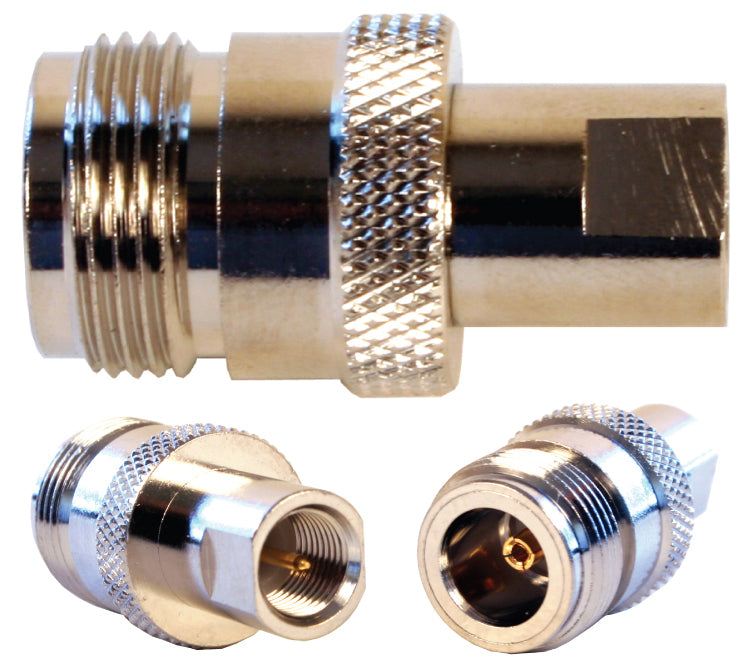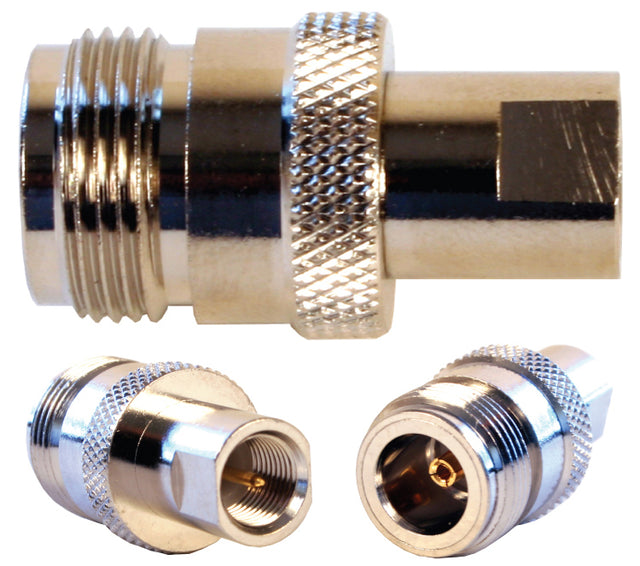Wilson 971108 N-Female to FME-Male Connector
90-Day Returns • Free Shipping $100+ • 2-Year Warranty
How to Choose the Right Antennas for Your Booster
Outside Antennas:
- Yagi Directional Antenna: This antenna is more powerful because it focuses on sending and receiving signals in one direction. It works best when there are no major obstacles blocking its path to the cell tower. It's not ideal for areas with large obstructions like hills or buildings.
- Omni Antenna: This antenna sends and receives in all directions, so it's better for hilly areas or if you need to support multiple carriers with towers in different directions. It doesn’t need to be aimed, but it also isn’t as strong as the Yagi antenna.
- High Gain LPDA Antenna: Perfect for areas with very weak signals, this antenna significantly boosts signal strength. It needs a clear line of sight to the cell tower and requires a sturdy mount because of its size.
- High Gain Omni Antenna: Similar to the standard omni, this antenna receives signal from all directions but delivers significantly higher gain across all supported bands. It’s a much stronger option when you want more inside coverage than a standard omni will provide, especially in areas with weaker outside signal.
Inside Antennas:
- Panel Antenna: Can be placed on walls or ceilings and directs the signal towards a specific area. This antenna is great for homes and tall ceilings in buildings.
- Standard Dome Antenna: Designed to be mounted on the ceiling, this antenna spreads the signal evenly throughout the area. It's best suited for drop ceilings or spaces where cables can be run above the ceiling.
- Ultra-Thin Dome Antenna: This slim antenna also mounts to the ceiling, but is much is less noticeable. It's much stronger than a standard dome antenna, making it a great choice for places where both looks and signal strength are important.
Tips for Choosing:
- Choose Omni Antennas for general coverage with no aiming required.
- Choose Directional Antennas (Yagi or LPDA) when you can point directly at a cell tower and need stronger signal and more inside coverage.
- Interior Size Considerations: One antenna per 750-1,500 sq ft in homes, or 1,500-2,500 sq ft in open spaces like offices and warehouses.
Product Overview
Product Overview
The Wilson 971108 N-Female to FME-Male Connector is expertly designed to bridge components with N-Female and FME-Male interfaces, enabling seamless integration within your signal booster setup. This connector is crucial for connecting a diverse range of antennas, cables, and amplifiers, ensuring system compatibility and enhancing performance.
Its construction from durable materials guarantees longevity and reliability, essential for maintaining a secure connection over time. The straightforward installation process makes this connector an ideal choice for quick and efficient system modifications, allowing for easy customization to meet specific requirements.
- Compatibility: Facilitates connections between N-Female and FME-Male components, crucial for integrating various types of signal boosting equipment.
- Customization: Essential for tailoring signal booster setups to specific needs, ensuring optimal layout and functionality.
- Reliable Connection: Provides a secure and dependable link, vital for efficient and uninterrupted signal transmission.
- Durability: Made from robust materials that withstand regular use, offering long-lasting performance.
- Easy Installation: Designed for ease of use, enabling quick and hassle-free modifications to your signal booster system.
With the Wilson 971108 N-Female to FME-Male Connector, you can effectively customize your signal booster system to enhance connectivity and performance, meeting your specific installation requirements and ensuring robust signal enhancement.
Specifications
Specifications
-
SKU971108
-
UPC
-
ConditionNew
-
ConnectorFME-Male, N-Female


